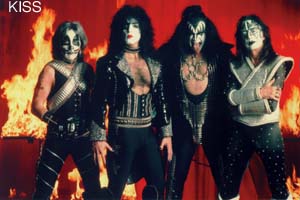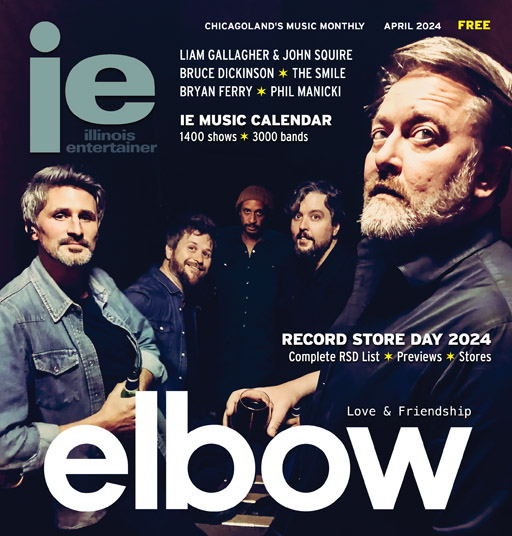Celebrity Helper
“You cannot make friends with the rock stars,” Lester Bangs insists, talking to the budding rock crit in Almost Famous. “They’ll buy you drinks, you’ll meet girls, they’ll try to fly you places for free, offer you drugs. But they are not your friends.”

Some follow Bangs’ advice, but the improbably/improperly named Lonn Friend, editor of Los Angeles glam metal’s main magazine, R.I.P., certainly didn’t. Friend was never as sleazy as the scene he covered, but he loved being associated with it, especially with the stars whom he constantly refers to as his friends. “I had always attributed my success in this business to the fact that artists trusted me. I earned the respect of bands and developed relationships because I never violated confidences or exploited scandal for the short-term reward of selling a few more magazines. Damn, we probably would have sold an extra hundred thousand mags a month if I had published one-tenth the dirt I knew about [Guns N’ Roses] alone.” Although he mentions many of the major players in the scene, the only dirt he dishes in Life On Planet Rock (Doubleday Morgan Road Books) is on himself. The collection of his celebrity encounters bids to be the most cringe-worthy memoir ever.
Friend was thrilled to accept KISS‘ invitation to fly home with them. “I dug breathing this kind of rarefied air, and Gene [Simmons] figured if we bonded like real bros, I’d be inspired to carry the KISS torch high and proud – in other words, I’d support him and his band on all media fronts. More press meant more exposure; more exposure meant more bucks in the KISS coffers. I was being played like a Stradivarius, but it didn’t matter because my ass was flying ultra first class on the dime of superstars.”
After the demise of his magazine (when hair metal was replaced with grunge) and his abortive TV career, he worked A&R for legendary record label honcho Clive Davis. Reprising this stage of his career, Friend provides rarely seen facts and figures and gives a brief but telling glimpse of how labels work, or rather why they don’t really work at all.
Jancee Dunn‘s But Enough About Me (Harper Collins) also combines celebrity anecdotes with a journalist’s memoir. But unlike Friend, Dunn keeps the rich ‘n’ famous at arm’s length; she’s under no illusion that they are her friends. A Jersey girl raised in a very white-bred J.C. Penny-loving family to whom she has always been far beyond close, Dunn writes in an amusing, self-deprecating style. She understood what her job required. At Rolling Stone, the editors knew that “cover images that sold the most briskly were of half-naked starlets, and we were encouraged to inject as much sex, drugs, and rock and roll into the text as we could reasonably get away with.” She describes her encounters with a constellation of stars from Madonna and Dolly Parton, to Stone Temple Pilots‘ Scott Weiland who tried very hard to get her to take some heroin.
Dunn constantly relies on meds to calm herself, but she is also a drinker who finds that encouraging others to drink makes for better interviews. She usefully scatters tips, a grand post-Bangsian primer, on celebrity interviews. “Keep in mind,” she advises, “those first few moments are key for celebrity-nobody relations. Famous people are like taffy: They are only pliant for a short period of time before they harden, and you’re left with canned answers.” Dunn muses “the process of engaging your celebrity is not unlike being a photographer at the Sears portrait studio. You just need a different version of a squeaky toy so that their eyes follow you and they smile occasionally.” She recommends the interviewer must “swiftly capture the attention of someone who is inured to both flattery and sincerity – surprise them with a fun fact about themselves. If you blow in with a newsy little item about them, there is instant festivity.”
Magazine interviewers like Dunn and Friend are useful, and indeed crucial, to creating and enhancing celebrity, but to advance to the highest level, death is the great career move – especially if it is what Steve Jones calls “‘death by fame.’ Its variations are many, ranging from overindulgence in drugs to murder, from suicide to car, helicopter, and plane crashes.” In Afterlife As Afterimage: Understanding Posthumous Fame (Peter Lang), Jones and Joli Jensen edited a series of essays assessing the posthumous careers of Robert Johnson, John Lennon, Karen Carpenter, Tupac, Patsy Cline, Elvis, Kurt Cobain, and Louis Prima.
No one benefited so much from his own mortality than Johnson. He is well known today, as his current record sales attest. “This is strikingly at odds with the short and obscure life of the man,” writes Eric W. Rothenbuhler in his chapter “The Strange Career Of Robert Johnson’s Records.” Like Jesus, Johnson died young, had various stories written long after his death, some with elements of magic and had acolytes who made his name. “Eric Clapton in particular was mystic in discussing Johnson, including frequent references to Johnson’s soul, the devil, bad dreams, and ghosts,” Rothenbuhler writes, “and was aided and abetted in his hagiography of Johnson in books by Greil Marcus and Robert Palmer. Only some of Johnson’s repertoire has become canonized, not his blues dance music but the ‘haunted suffering songs.'”
In their essay on Carpenter, Peggy J. Bowers and Stephanie Houston Grey write: “a celebrity is a fiction – a collection of myths designed to market the texts with which they are associated. They are, in essence, walking, breathing commercials for music, books and films.” And they walk and breathe so much better beyond the grave.
– Deena Dasein









